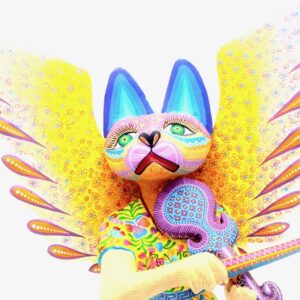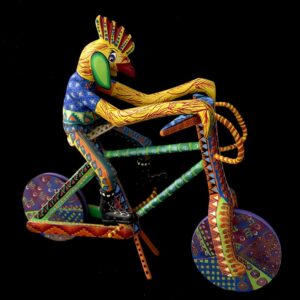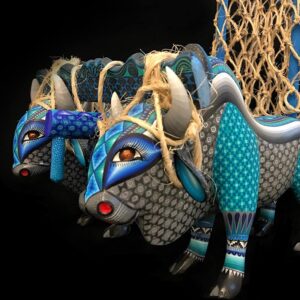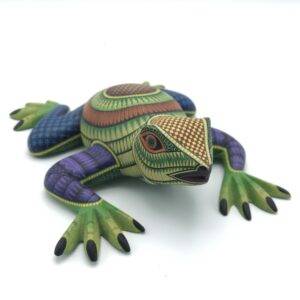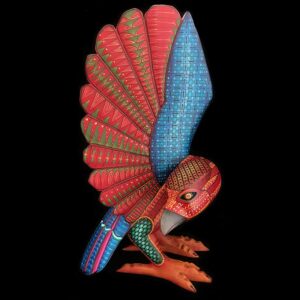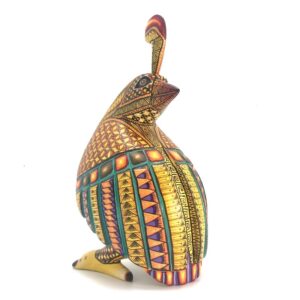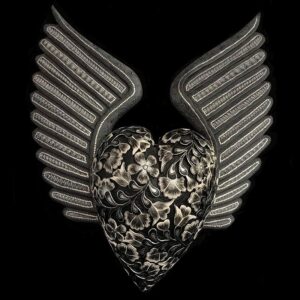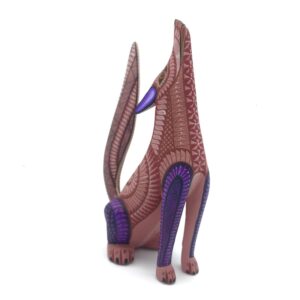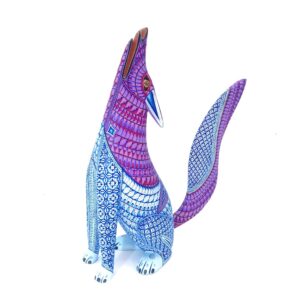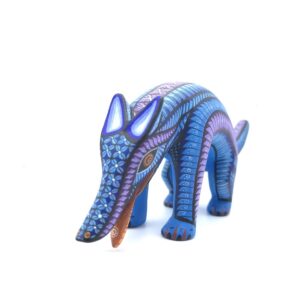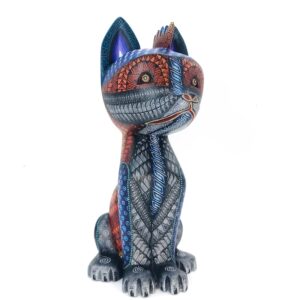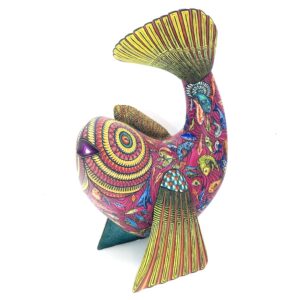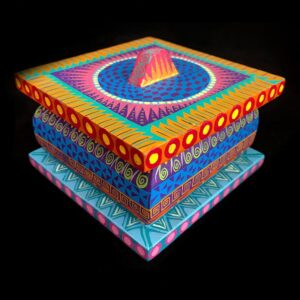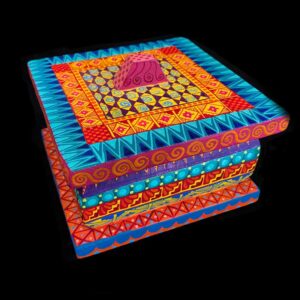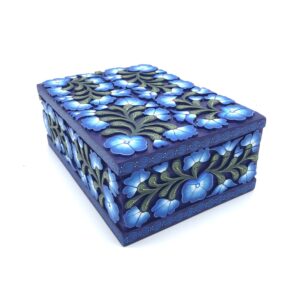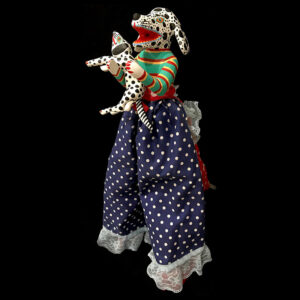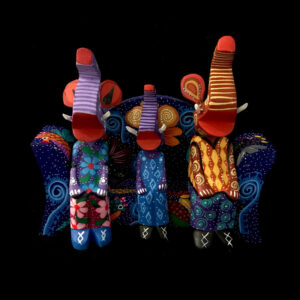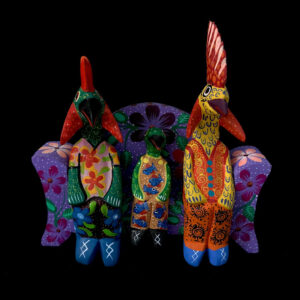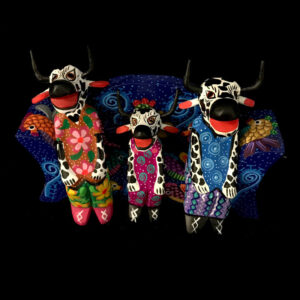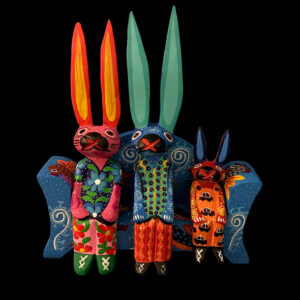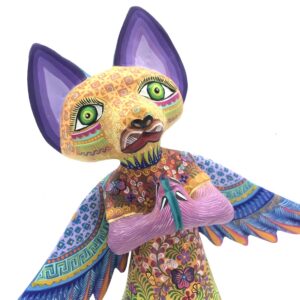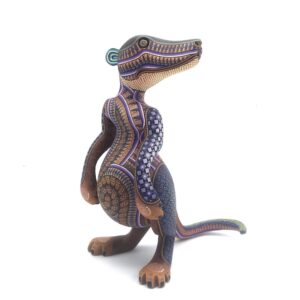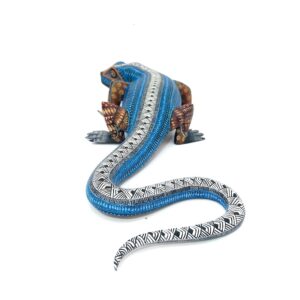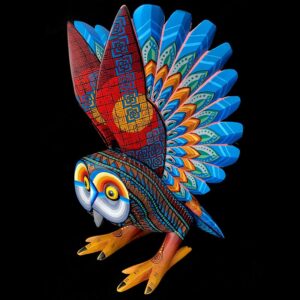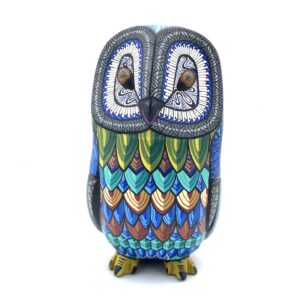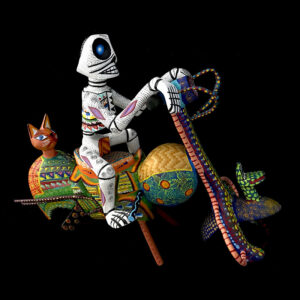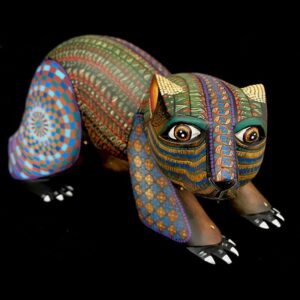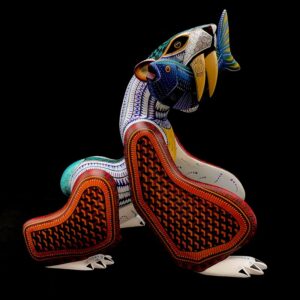Alebrijes, Tonas and Nahuales
Featured Art Work
¿What are Alebrijes?
Alebrijes, Tonas and Nahuales are protective animals that guide and protect us throughout our lives. Formerly in the Zapotec towns, the father assigned the protective animal to each newborn, his Tona, together with his paternal blessing.
The Tonas are spirited animals that eventually become Nahuales. The Alebrije is born from dreams, the fanciful representation of the Nahual that becomes a spiritual figure.
The traditional Mexican copal tree is planted and harvested, so that expert carvers can complete shaping its pieces in the way which Nature intended for it. A wavy branch will become a stalking cat, another branch is a coyote howling at the moon. After the carving is completed, the wood has to rest and wait patiently for all moisture to come out of its interior, revealing the veins and cracks that need to be healed . The process can takes several months, according to the size of the piece, and only ends when it is completely smooth and ready for background coloring.
It is later, during the decoration process, that patterns and colors of extraordinary beauty and meaning are developed, witnesses of the Legacy and the Wisdom of the ancient Zapotecs for the new generations.
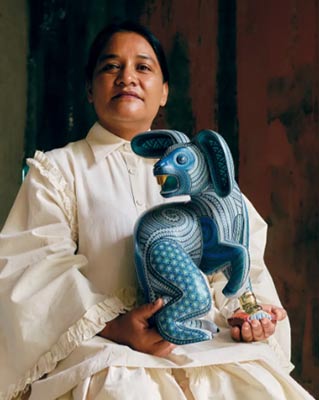
Workshop Jacobo and María Ángeles
Jacobo and Maria’s workshop was founded in the early 90’s, just at a time when the majority of the town’s youth seemed to have lost faith in traditional arts and crafts and were migrating to the United States. Its excellence and success, both nationally and internationally, have served as inspiration to undertake the rebirth of the tonas and nahuales, the animals with spirits that have always accompanied this ancestral culture.
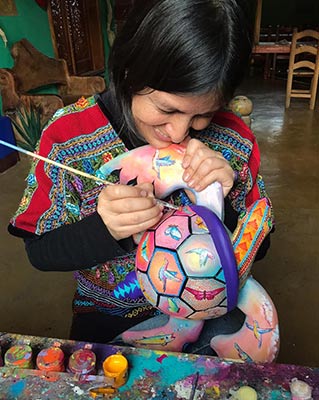
Workshop Efrain and Silvia Fuentes
From a very young age, Efrain Fuentes began to carve wood, learning the trade from his father, Epifanía Fuentes, which he inherited and developed from his grandfather Zenen Fuentes. Now the members of the family are dedicated to carving and painting figures of copal, cedar, willow, walnut and zompantle wood, with a very own style, witness of the lineage that their grandparents left behind.

WorkShop Javier and María Soledad Jimenez
A passionate craftsman, Javier began to familiarize himself with brushes at an early age, painting landscapes that over time would become marvelous carvings of flowers and patterns such as carnations and Isthmian flowers, inspired by the embroideries that women from this and other regions , they use in their clothing. Javier’s project began to grow when he married Maria Soledad Fabian, who brought a touch of elegance with her delicate lines and color degradation.

Alebrijes from several artists
“Pero anduve entre flores zapotecas y dulce era la luz como un venado
y era la sombra como un párpado verde.”
Pablo Neruda.
“I got to know the town of San Martin Tilcajete in the mid-90’s, shortly after I came across my first alebrije. That frog with the bright red body and dreamy expression filled me with curiosity. I kept thinking about her and imagining the careful hands that created and painted her with such quality and precision. Within days, she was sitting on a noisy second-rate bus heading to Oaxaca City – and at that time the trip lasted all night. I was awakened by the cold of the early morning, together with an unforgettable chocolate “champurrado” and the equally unforgettable smile of the woman who for many years later continued to brighten my arrival in the city with her delicious atoles, tamales and champurrados…. The magic had begun! When I was finally able to arrive in town a few hours later, my heart was already full of joy and emotion, my eyes full of colors, and my mind perfectly adapted to the friendly and relaxed rhythm of this wonderful corner of the world. This feeling became a part of me in a completely unexpected way. Every time I return, I return home. “
Lucia Crespi.
